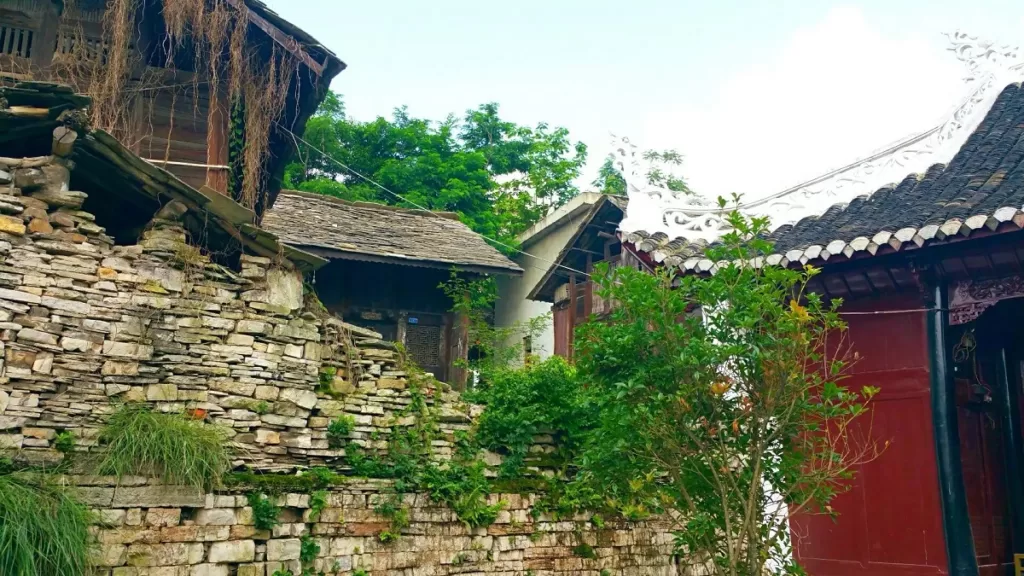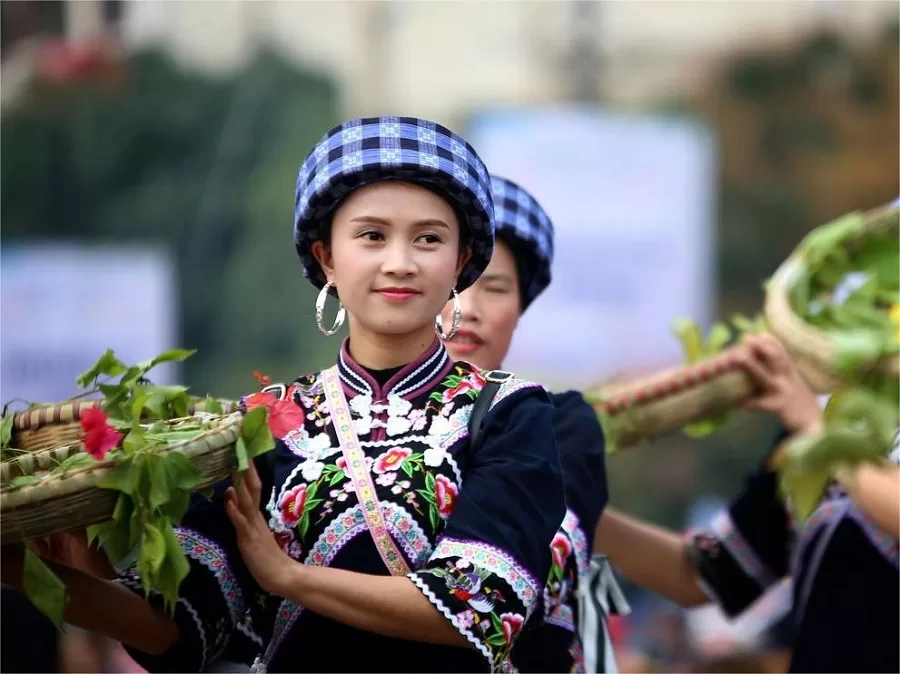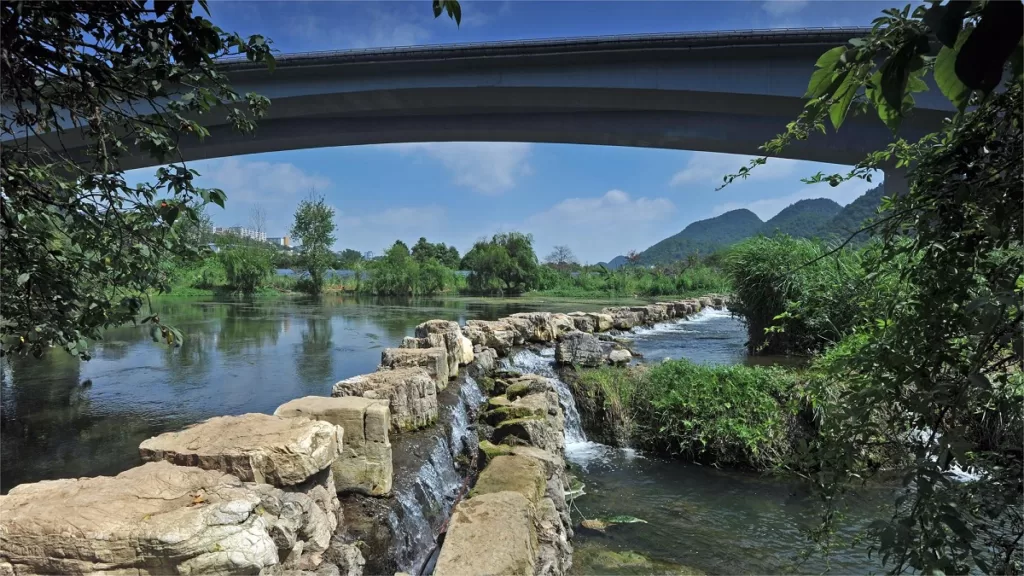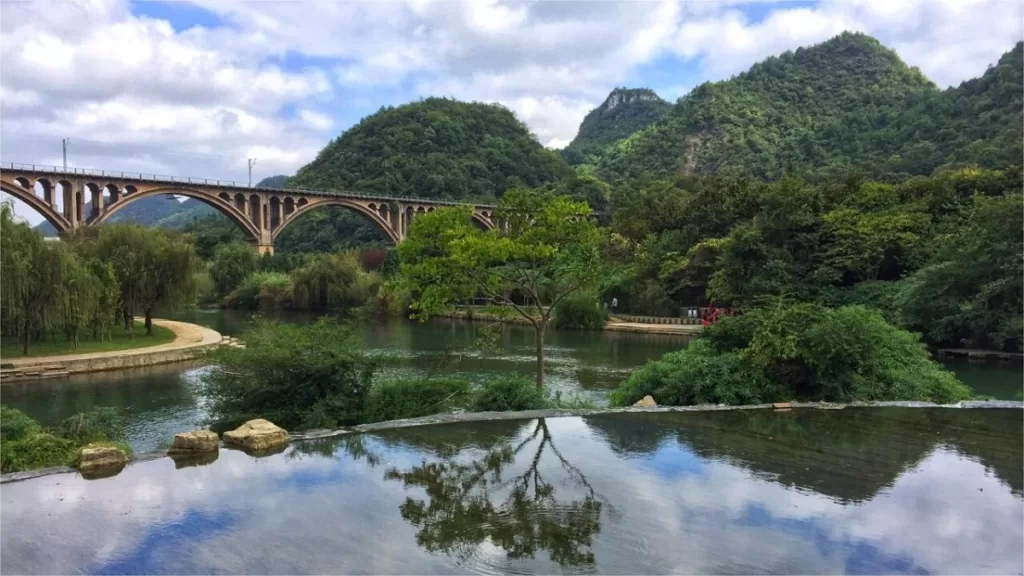Aldeia étnica de Zhenshan, Guiyang - Bilhetes, horário de abertura, localização e destaques


Zhenshan Ethnic Village (镇山村), nestled on a peninsula in the heart of Huaxi Reservoir in Guiyang City, spans an area of 3.8 square kilometers. Adjacent to the scenic beauty of Huaxi, this village is a quintessential representation of a traditional ethnic enclave. Comprising five villagers’ groups, Zhenshan is home to over 140 households, predominantly inhabited by the Buyi ethnic group.
Resembling an ancient fortress, the village is encircled by walls built against the mountainside. Constructed with large, well-arranged stones, the city gates boast arches crafted from stone slabs. The walls and courtyards of the houses are meticulously assembled with small stone blocks, and the irregular stone slabs replace conventional tiles on the roofs. The pathways and steps in the village, as well as the lanes and alleys, are all paved with substantial stone slabs. Even everyday items such as water containers, grain storage bins, and even the manger for livestock are intricately carved from stone, showcasing the villagers’ skill in stonework. The statues in the village’s mountain god temple are also hewn from stone.
Renowned for its ancient heritage, rustic ethnic charm, and rich folk culture, Zhenshan Village earned the designation of “Guizhou Zhenshan Ethnic Cultural Conservation Village” in 1993. In 2000, through the Oslo Agreement with Norway, Zhenshan Village established the Buyi Ethnic Ecological Museum with the financial support of the Norwegian government. Subsequently, the village entered a prosperous era of tourism development.
Índice
- Informações básicas
- Localização e transporte
- Highlights of Zhenshan Ethnic Village
- Vlog about Zhenshan Ethnic Village
- Outras atracções no distrito de Huaxi
Informações básicas
| Duração estimada da excursão | Meio dia |
| Preço do bilhete | Grátis |
| Horário de funcionamento | 24 horas por dia |
Localização e transporte
Zhenshan Ethnic Village is situated on a peninsula in the central part of Huaxi Reservoir, located in Shibantan, a town within the Huaxi District of Guiyang City, Guizhou Province, China. This charming village is surrounded by water on three sides, creating a unique and picturesque setting.
To get to Zhenshan Ethnic Village from the Riverside Park Bus Station, take a bus heading to Tianhe Tan. Once you reach Shibanshao, you can either walk approximately 2 kilometers into the village or opt for a motorcycle ride for a convenient journey into the heart of the village.
Highlights of Zhenshan Ethnic Village
Stone Alley

One of the village’s distinctive features is Stone Alley, a manifestation of the mountainous rural charm. Stretching approximately 120 meters from the north to the south gate, this path is over 3 meters wide. East-west stone steps and lanes lead to various households, creating a captivating architectural profile. Ascending the stone path, about 100 meters long and 2 meters wide, visitors encounter traditional stone and wood houses arranged neatly on both sides. Functioning as the primary passage for villagers since the Ming and Qing dynasties, Stone Alley retains its role as a vital route for production and daily life.
Wu Temple

Dating back to the Ming Wanli era (1573–1620) and reconstructed in the Qing Guangxu period in 1908, the Wu Temple stands as a cultural relic. With a width of five rooms and a height of approximately 15 meters, the temple occupies an area of 250 square meters. Though parts of the side halls and passageways have succumbed to time, the main hall underwent restoration in 1995 and now hosts a historical photo exhibition capturing Zhenshan’s rich past.
Tun Wall

Constructed during the Ming Wanli era and later restored in the Qing dynasty, Tun Wall is a testament to ancient fortifications. Built with blue stones, the majority of the wall hase crumbled, but the foundation remains intact. Spanning over 700 meters at the heart of the village, the wall stands 5-10 meters tall, with a base width of 3-4 meters. Despite its age, remnants of strategic features like battlements are still visible. Two gates, south, and north, each with gatehouses, were once vital entry points. While the south gate remains well-preserved, the arch of the north gate’s dome has suffered partial damage.
Cultural Festivities and Cuisine

Zhenshan Village comes alive during festivals, particularly on the tenth day of the lunar new year when the “跳厂” (jumping yard) event takes place. Drawing participants from nearby regions, including the Buyi and Miao ethnic groups, the festivities involve playing lusheng (a reed-pipe wind instrument), dancing, and sparrow fights, attracting thousands of attendees. Another significant celebration is on the sixth day of the sixth lunar month, where the Buyi people engage in traditional singing competitions.
As for cuisine, the villagers predominantly consume rice, complemented by homemade rice wine and low-alcohol drinks like 刺藜酒. Culinary delights include local favorites such as yam, preserved meat, sausages, dried tofu, wild vegetables, sticky rice flowers, small bean flowers, sour soup with small beans, shaded chili peppers, and deep-fried black glutinous rice.
Vlog about Zhenshan Ethnic Village
Outras atracções no distrito de Huaxi

Huaxi National Urban Wetland Park

Vale de Huaxi Yelang

Academia Confúcio de Guiyang

Parque Huaxi

Área cénica da piscina de Tianhe

Cidade antiga de Qingyan
Atracções de Guiyang, Vida local em Guizhou